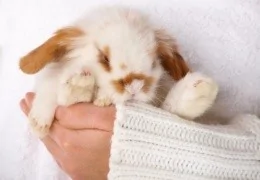The Tornjak originated from genetically homogeneous, almost extinct, indigenous shepherd dogs. These dogs have...
THE HARDEST DECISION: SACRIFICE
INTRODUCTION
Sometimes, our pets suffer from ailments related to their advanced age, illnesses or accidents that cause pain and suffering incompatible with a dignified life.
There is no doubt that these situations can cause us enormous sadness, but worse than an inevitable death is to prolong a life of suffering and pain. Putting an end to this situation is always the last of the alternatives to be taken, but always after a proper professional veterinary assessment.
WHAT IS HUMANE KILLING OF ANIMALS?
Euthanasia in animals consists of a professional action, carried out by a veterinarian, in which an animal is killed by means of a humane process without suffering or pain, in which the animal is left unconscious until it dies.
Palliative euthanasia requires the prior assessment of the veterinarian, who, under his criteria and control, after carrying out the appropriate tests and examinations, under his expert diagnosis, verifies and certifies that the animal is in a situation of severe, continuous suffering and with no possibility of cure or recovery. Only in these cases does the veterinary professional justifiably indicate the suitability of putting an end to the animal's life.
WHAT IS THE HUMANE SLAUGHTER PROCESS FOR ANIMALS?
After the veterinary professional has carried out the necessary assessments that lead to recommending this step in the face of severe suffering and the impossibility of cure, the consent of the owner of the pet is issued.
Only then does the procedure begin, which always follows the same pattern, with very clearly defined steps.
This procedure is not very different from the previous steps in the anaesthesia of any surgical intervention, so the animal does not feel pain or discomfort during the procedure, something that must be taken into account.
The steps involved are as follows:
- PLACEMENT OF THE INTRAVENOUS CATHETER: It is normally placed in one of the animal's legs in order to have easy access to the bloodstream and to apply the drugs more quickly intravenously.
- INJECTION OF HYPOTENSING DRUG: This is administered through the catheter. The same drugs used in anaesthetic protocols are usually used for any standard surgical procedure.
- DEEP ANAESTHESIA: After waiting 10-15 minutes for the animal to calm down, the animal is introduced to a deeper anaesthetic plane by means of drugs.
- ADMINISTRATION OF EUTHANASIA: Finally, we wait again for the medication to take effect and check that the animal is in a deep anaesthetic plane. Palliative euthanasia is then administered.
CAN HEALTHY ANIMALS BE KILLED?
In general, the slaughter of animals is prohibited except for the palliative euthanasia we have seen, or except for reasons of safety of people or animals, or the existence of a risk to public health duly justified by the competent authority.
In particular, and as indicated in the new Animal Welfare Law, it is expressly forbidden to slaughter animals in animal shelters, veterinary clinics and zoos for economic reasons, overpopulation, lack of places, impossibility of finding an adopter within a certain period of time, abandonment of the person legally responsible, old age, illness or injury with the possibility of treatment (either palliative or curative), behavioural problems that can be corrected, as well as for any other reason similar to those mentioned above.
Therefore, we see that with this prohibition the legislator has wanted to tackle a particularly controversial and difficult matter, such as situations of sacrifices for economic reasons, overflow of shelters, abandonment or recoverable lives, and does so without half measures, establishing a total prohibition in this respect and classifying it as a very serious offence (with fines of between 50,001 and 200,000 euros).
WHAT CAN I DO AFTER I HAVE TO PUT MY PET DOWN?
At this point we can choose to take the body of our pet with us or leave it at the veterinary clinic. When a pet dies, it cannot be thrown away as such (it is forbidden because it could be an important source of infection), but we have to dispose of it properly, either through the vet or through the different pet funeral homes that we can find on the market.
The vet (as a general rule) will go to the council's deceased pet collection services and keep the body well packed in a freezer to avoid degradation, or call the funeral parlour if the owners have requested and paid for such a service.
If the animal has died in the veterinary hospital (many belong to veterinary schools) the body can be released for study, especially in extremely complex or unusual cases for the professional.
CONCLUSION
Saying goodbye to our pet is always a hard moment, and in the most delicate cases it becomes a sign of love and responsibility towards our animal, as it gives us the opportunity to free it from its pain and a miserable life that cannot be improved in any way.
Leave a comment
Log in to post comments

















